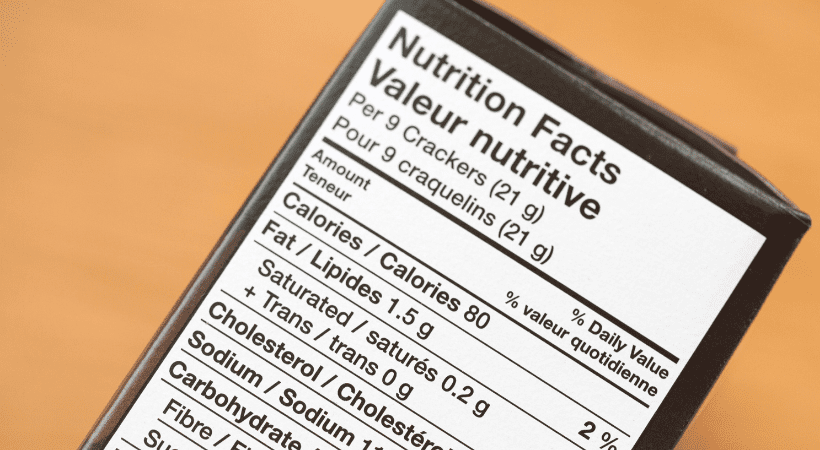Multi-Lingual Labels in the EU
Multi-Lingual Labels in the EU
Are you looking for growth in international markets?
It might seem obvious, but food and drink labels need to be changed when you launch in new markets, and a simple Google translation just won’t cut it. Everything from ingredients and nutritional information to health claims and design can require changes to meet the regulations in the country of destination.
As you expand, it’s important to consider what regulatory complexities come coupled with your new markets of sale. We spoke with our international regulatory advisors to explore some of the elements that your business should consider to ensure your label can talk the talk in any language.
Table of Contents
1. Understand what regulations matter to your food product
Each market has its own framework of law, even those in regions such as the EU. This means there are essentially two sets of regulations that brands need to get to grips with if exporting their product to the EU market. There is harmonised EU food regulations in place, and national regulations – often derived from EU law but interpreted and enforced differently in each Member State.
An example of this regulatory complexity is the difference in permitted ingredients between Member States. For example, Titanium Dioxide was first banned in France, so while it was still accepted under national EU law, products containing it could not be sold in France even under the mutual recognition principle. This ban was introduced into national EU law in 2021, but it remains a permitted ingredient in the UK.
Different product definitions also apply in different markets such as the term “alcohol free” which in the UK is defined as 0.05% abv, but in the EU is 0.5% abv. Similarly, one UK unit contains 8 grams of pure alcohol, while in the Republic of Ireland, this is 10 grams (exasperating, we know).
2. Which format is better – Over-stickers or multilingual?
Multilingual labels and over stickers are commonly used by brands as a way of displaying product information in multiple languages, allowing them to expand into new markets using fewer label designs. What should brands think about before investing in labels meant for more than one language?
One of the biggest factors when choosing over-stickers and multilingual labels is cost. Multilingual labels may be more cost effective in the long run by reducing the number of labels to design, depending on the number of countries you wish to export to. They also streamline stock management, helping you to avoid costly mishaps as you export.
In contrast, over-stickers may require a separate sticker for each country (and even regions), meaning added costs and a higher margin for error. Over-stickers find their place in situations where there is perhaps a short-term change in the information that needs to be on a label or to correct an error in a multilingual label (of course, by working with food labelling compliance experts like Ashbury, you can avoid this).
Whichever you choose, a brand must get to grips with the regulation surrounding their use. In the EU, FIC Regulation (EU) No 1169/2011 provides the main guidance on labelling requirements (FIR in the UK). It states that “mandatory information shall appear in a language easily understood by the consumers of the Member States where a food is marketed.” It also states that mandatory food information “should not, in any way, be hidden, obscured, detracted from, or interrupted by any other written or pictorial matter or other intervening material.”
3. Know which languages & countries can be clustered
Brands can also benefit from multilingual labels where the languages are similar in spelling. For example, let’s focus on Europe:
In the Scandinavian markets Denmark, Norway and Sweden, it is acceptable under national rules (and common practice) to combine these languages on food labels where the wording is insignificantly different in spelling. This can greatly benefit businesses by creating extra space on labels.
The Scandinavian Food Authorities provide some brief examples in national guidelines of what is acceptable. However, with limited examples and the national legislation not providing clear information on what is acceptable and not, it is important to treat each label on a case-by-case basis, being vigilant when merging to ensure that the information is not only compliant with the local food labelling regulations, but that the right bits of it will be understood by the consumers in each market. In certain cases, we advise against merging information, for example, in relation to allergens and for prescribed terms under legislation.
Below is an example of combined labelling of a list of ingredients in Danish, Swedish and Norwegian:
Ingredienser: Socker / Sukker, vatten / vann, glukossirap / glukosesirup, modifierad potatisstärkelse / modificeret kartoffelstivelse / modifisert potetstivelse, syror /syrer (E296, E334), majssirap /-sirup, fuktighetsbevarande medel / fugtighedsbevarende middel / fuktighetsbevarer (E418), färgämnen / farvestoffer / fargestoffer (E110, E132), aromer / aromaer.
Combined food labelling is not acceptable in Finland as it is vastly different from the Scandinavian languages. Although, it is important to note that both Finnish and Swedish are required for products sold in bilingual municipalities in Finland.
Where a brand wants to export to Benelux, Switzerland, Belgium and Luxembourg, the label could require a mix of French, German, Italian, Dutch and Luxembourgish – this will depend on where in each country you plan to sell your products.
Other countries that can be grouped together for labelling purposes include Canada where English and French are required due to these being the country’s two official languages. Malta and Iceland both only require one language which may be English i.e. the native language isn’t required.
It’s crucial to understand the languages required for different regions and countries, in addition to the way translations are made. A UK retailer recently found itself in hot water over a potentially automatically generated, but very literal, translation of the phrase ‘chocolate powder’ in Czech. The nature of the ingredient meant further food labelling regulations applied but were overlooked – the label was both non-compliant and did not make sense to consumers.
So, as you can see, it can get quite complicated!
4. Using different logos & emblems
Logos can present stumbling blocks for brands when exporting their products overseas. As ‘ESG’ commitments drive regulatory change, recycling labelling on packaging is one such area of disparity. In France, the Triman logo is mandatory for France, whereas in Spain the Green Dot is mandatory, and deposit return schemes continue to be a real challenge to navigate.
Regulations in place before the UK left the EU will not automatically apply, and there have been several new schemes introduced in the UK which require their own logos, for example, Protected Designation of Origin (PDO), Protected Geographical Indication (PGI), and Traditional Speciality Guaranteed.
Leave the legal complexities to the experts.
It can be hard work for brands to undergo the time-intensive process of adapting your label for export. Ashbury’s team of labelling compliance experts span over 90 countries worldwide and are native speakers of the languages in which products are to be marketed in, which helps to ensure brands not only successfully comply with regulations but are accepted culturally. We provide our service from one point of contact and ensure all our advice is aligned and of equal quality which can be a challenge when dealing with different consultants for each market.
To find out more, talk to one of our team.
Related Posts
Deposit Return Schemes in the UK and EU
Triman logo and sorting instructions in France
Mutual Recognition Principle – The Reality of the EU’s ‘One-Market’
Next reads
The Peanut Diaries: School and Social Occasions
The Peanut Diaries: Navigating Social Events and Celebrations with Food Allergies
The Peanut Diaries: A Parent’s Journey to Uncovering their Child’s Allergy
Redefining Healthy: What the FDA’s New Rules Mean for Food Labels and Nutrition Claims
Keep up to date with our latest insights
Subscribe to our mailing list to stay in touch with the latest news, insights and updates from Ashbury





